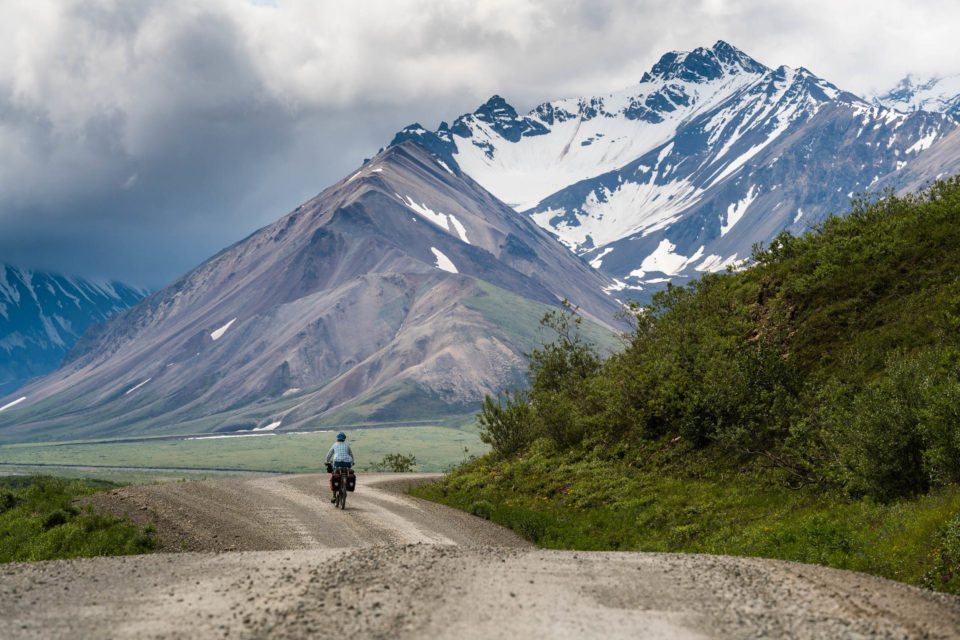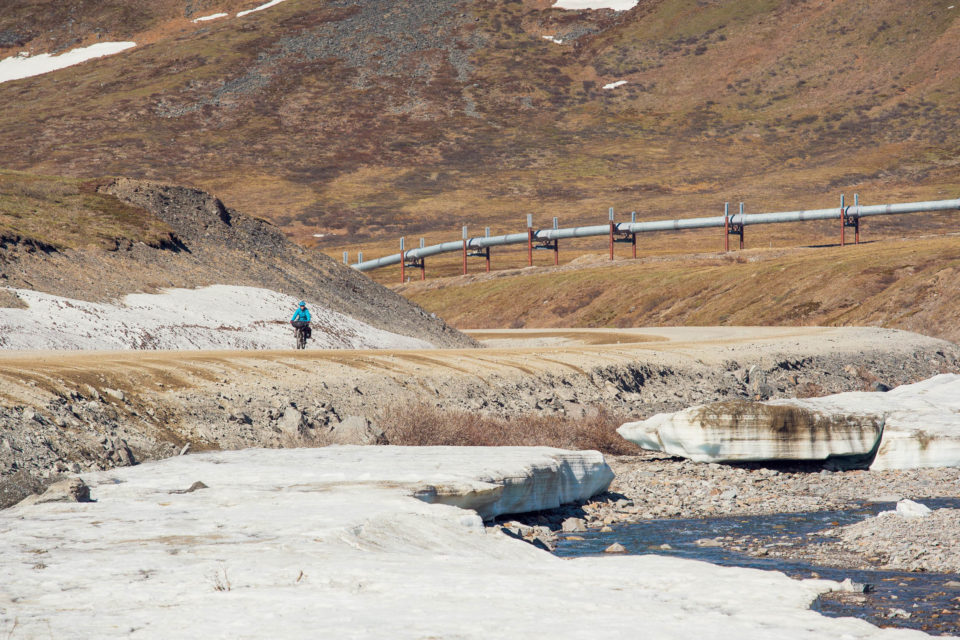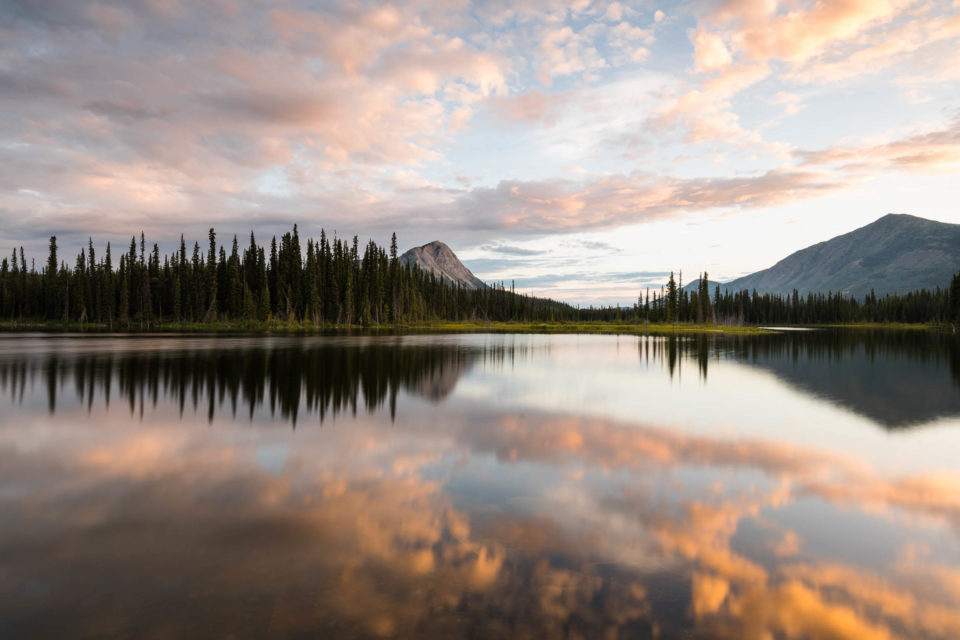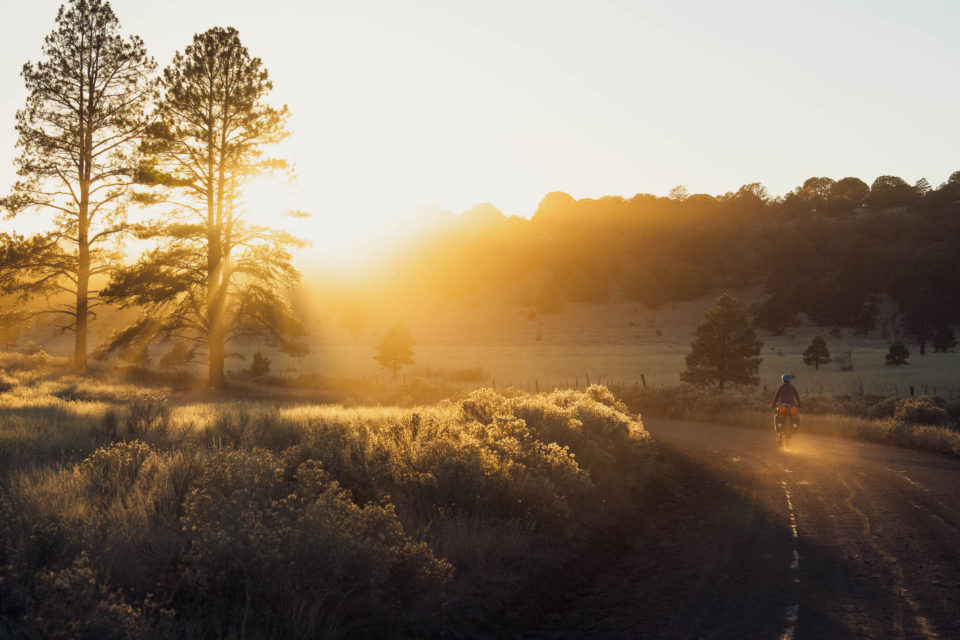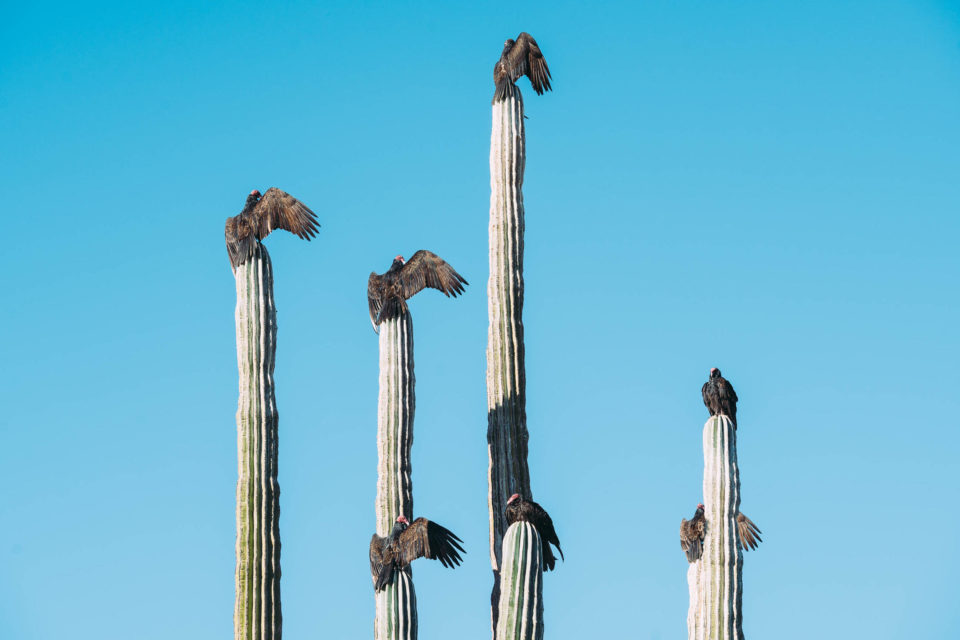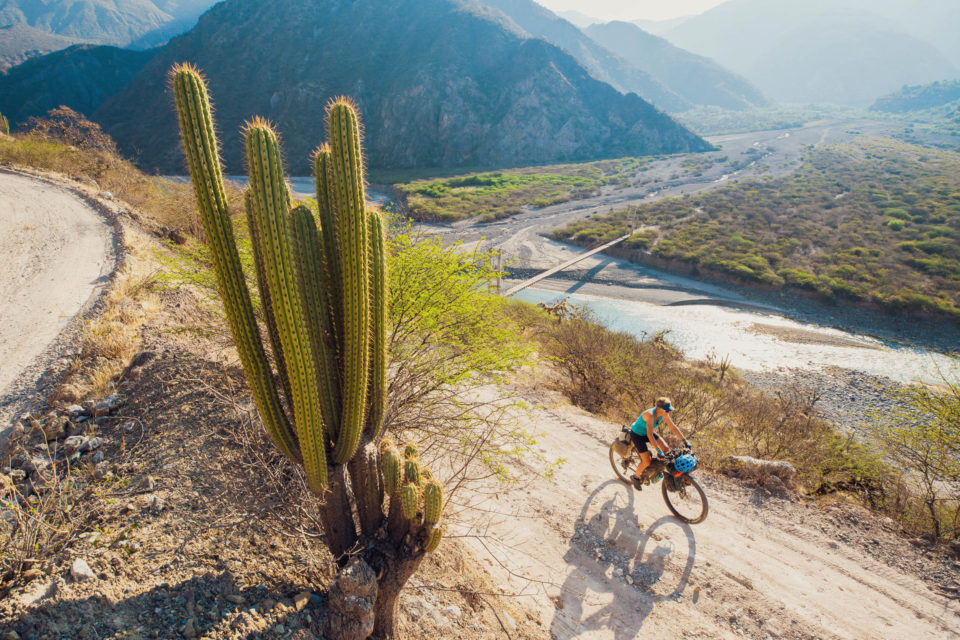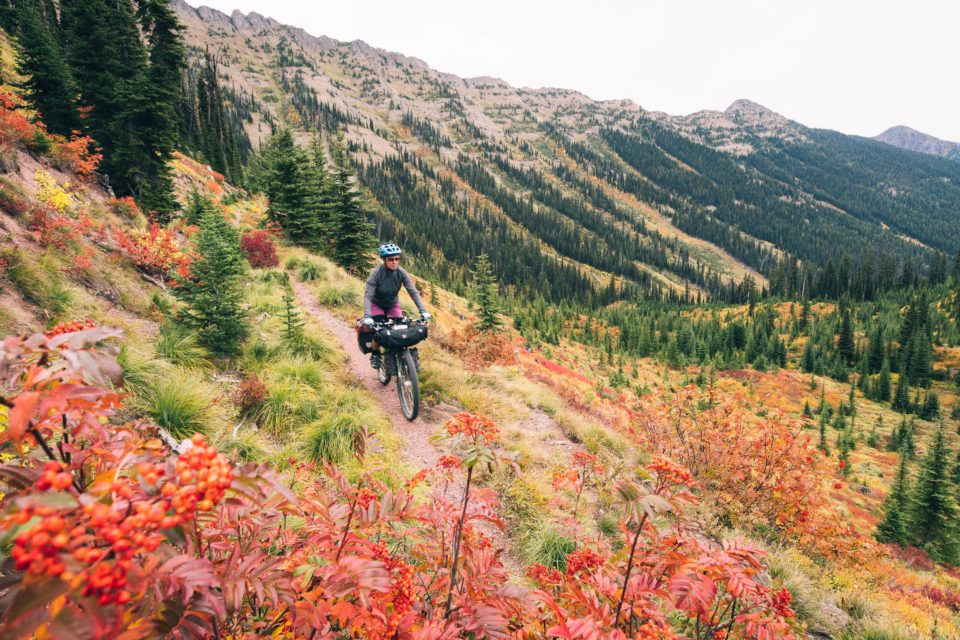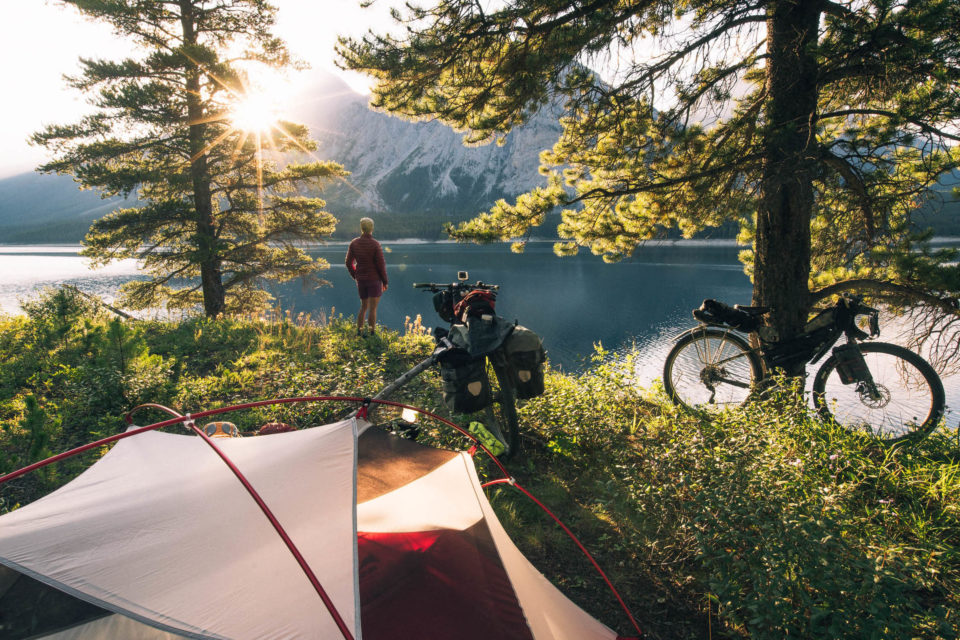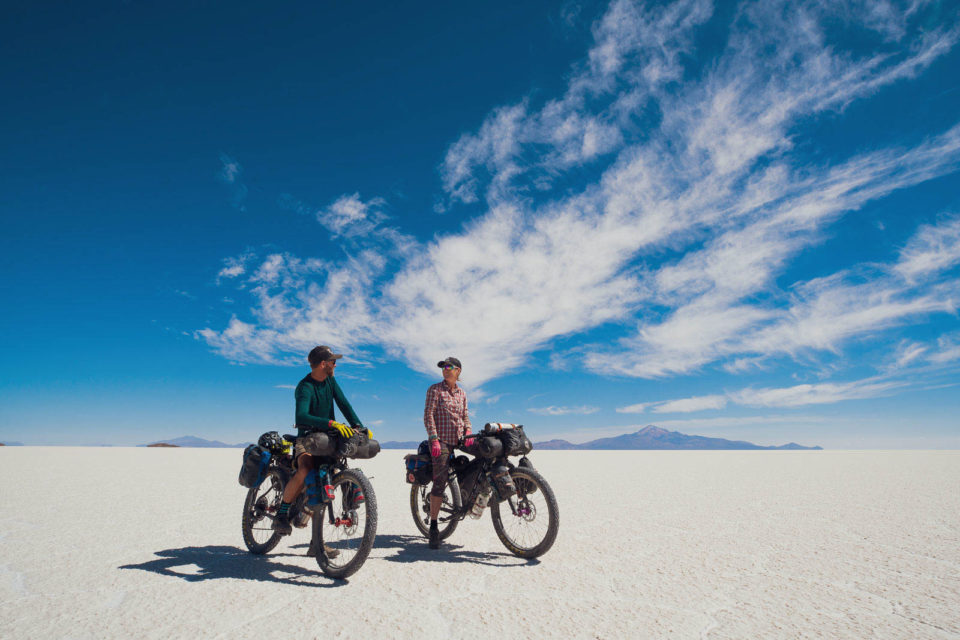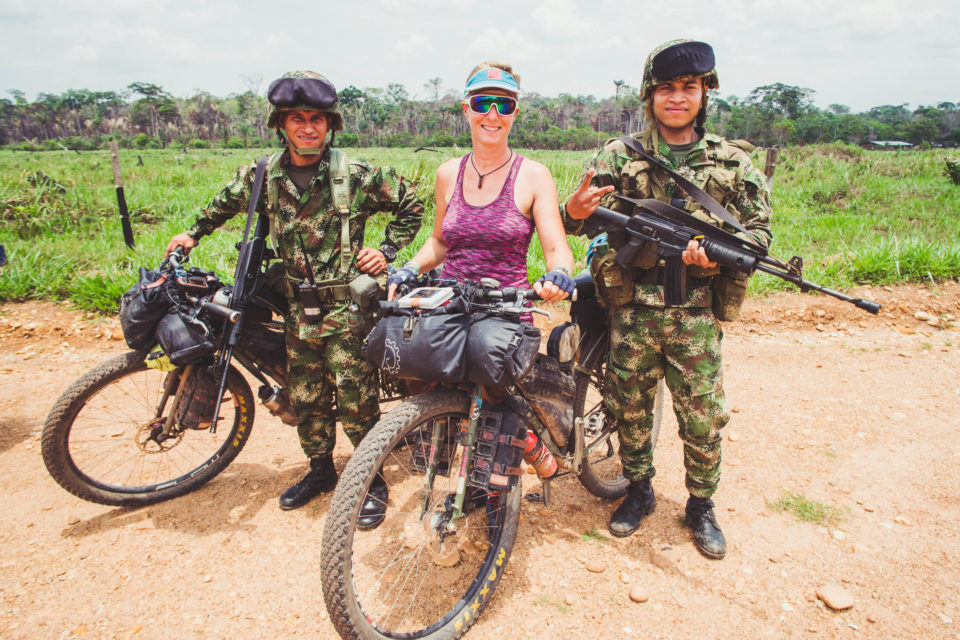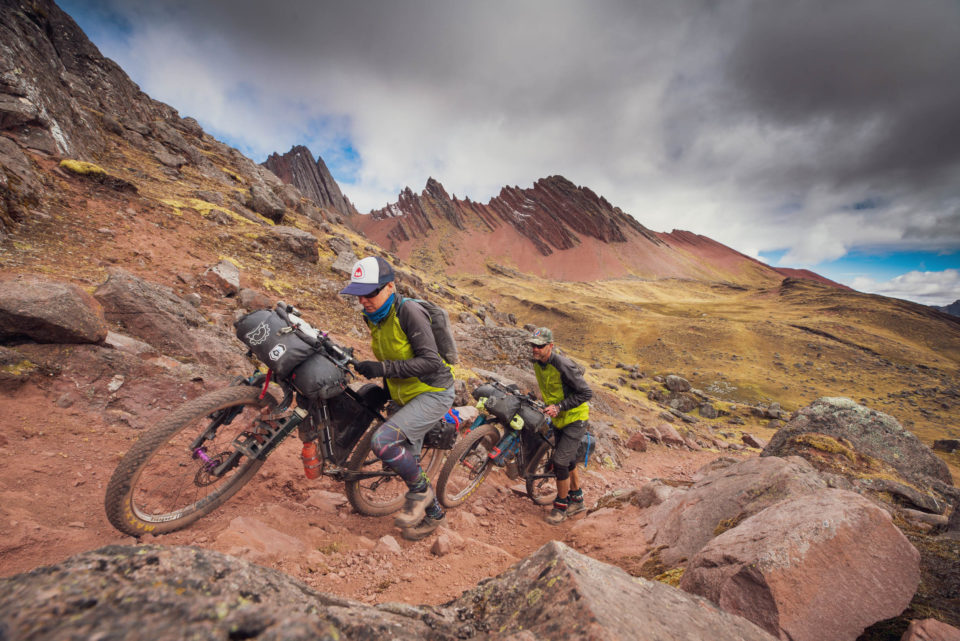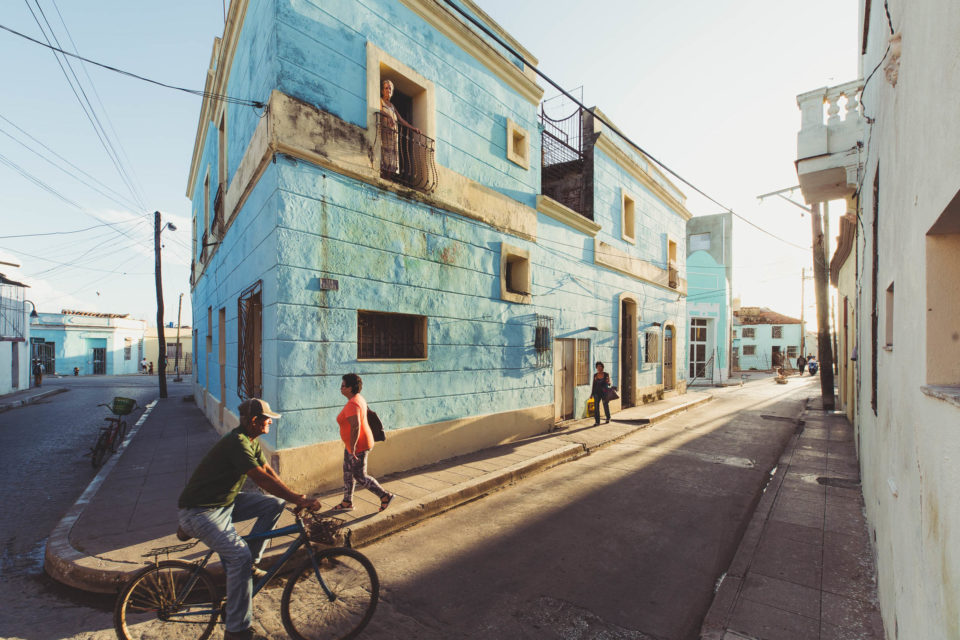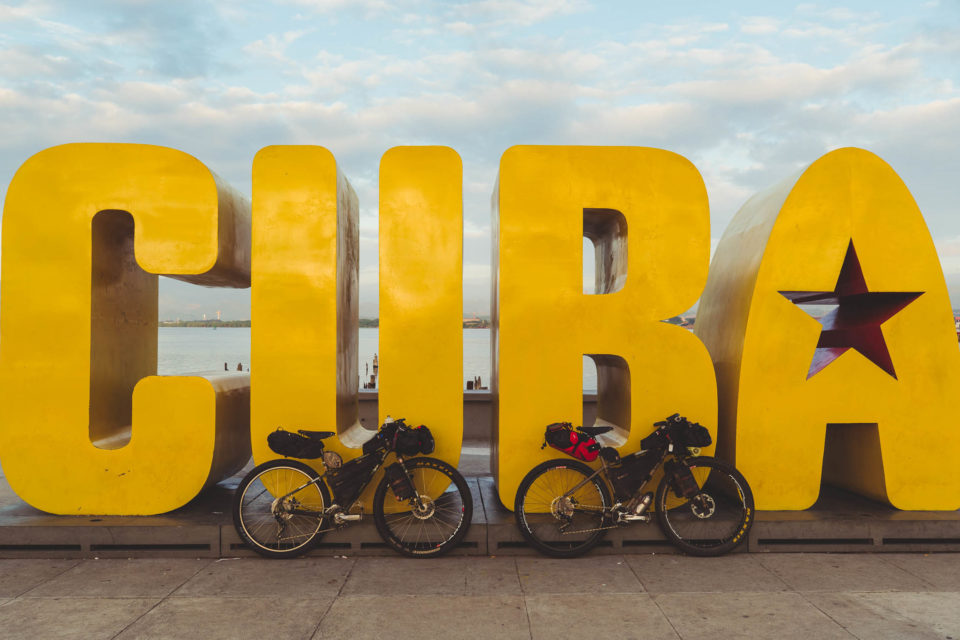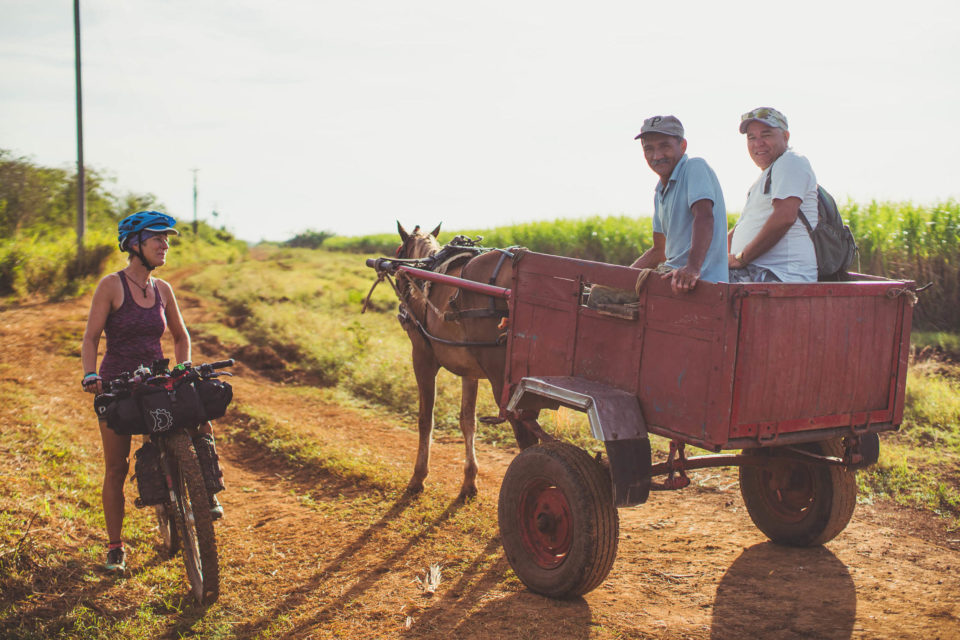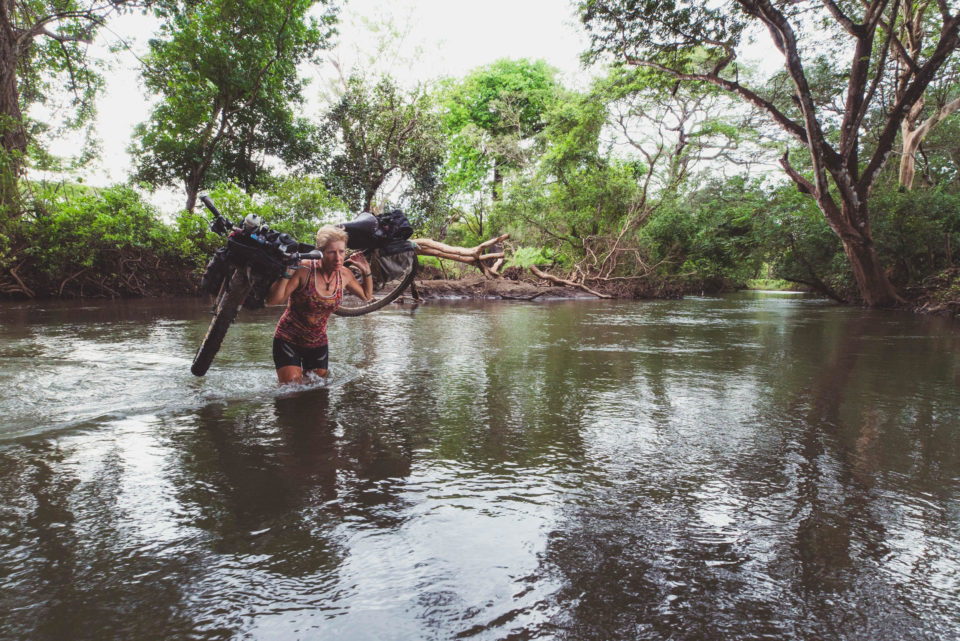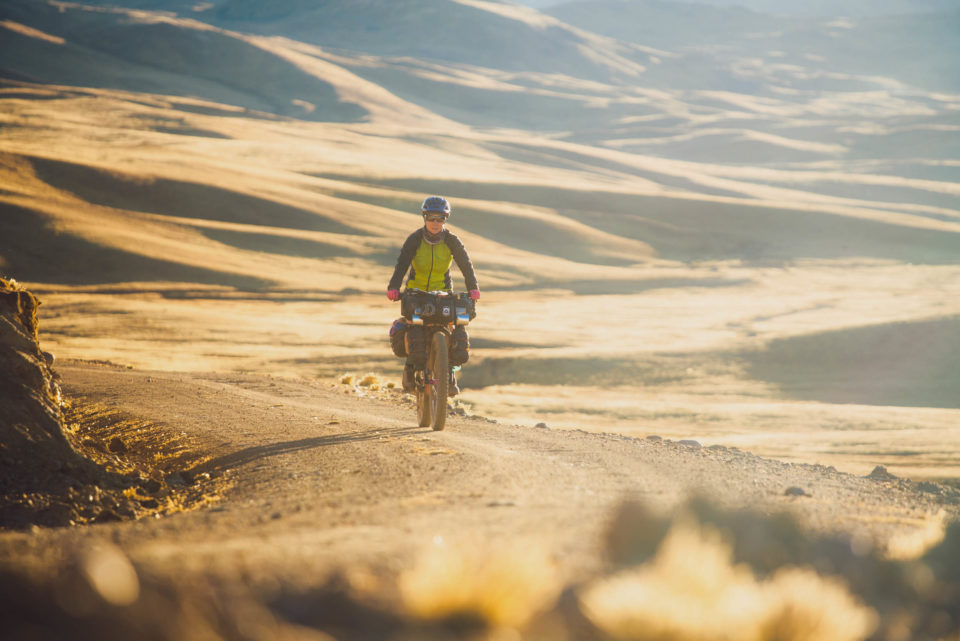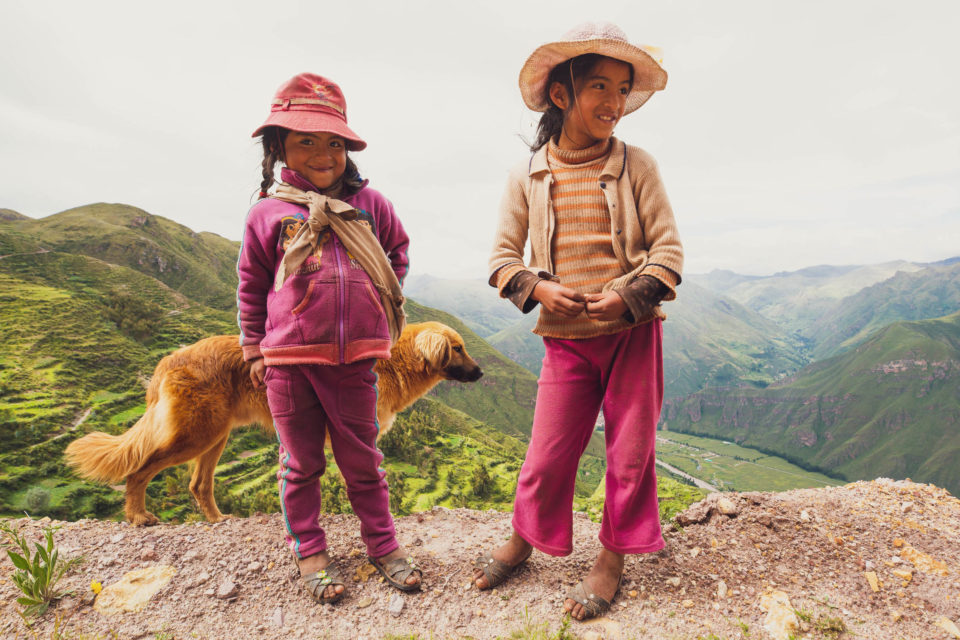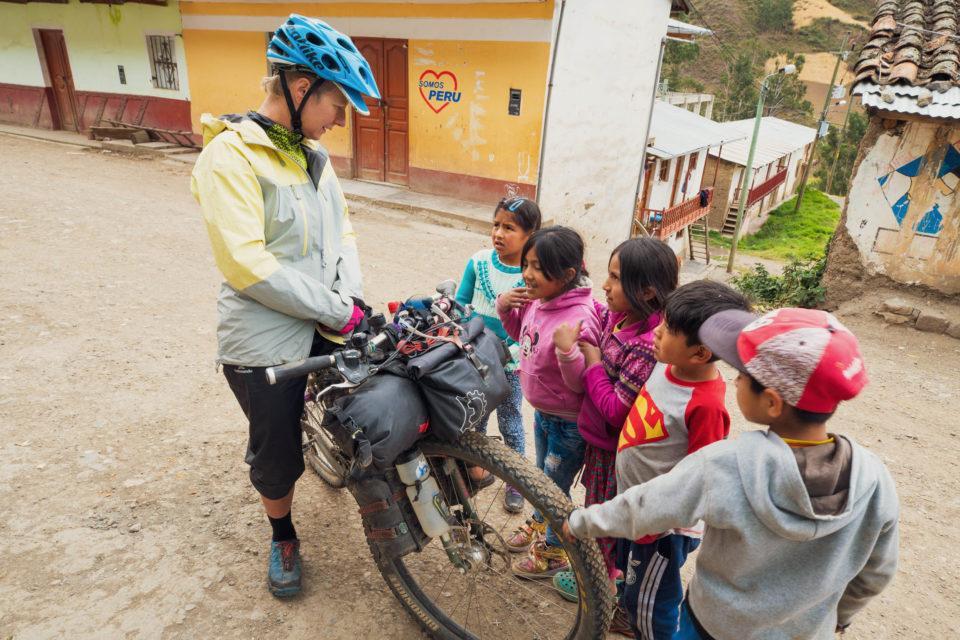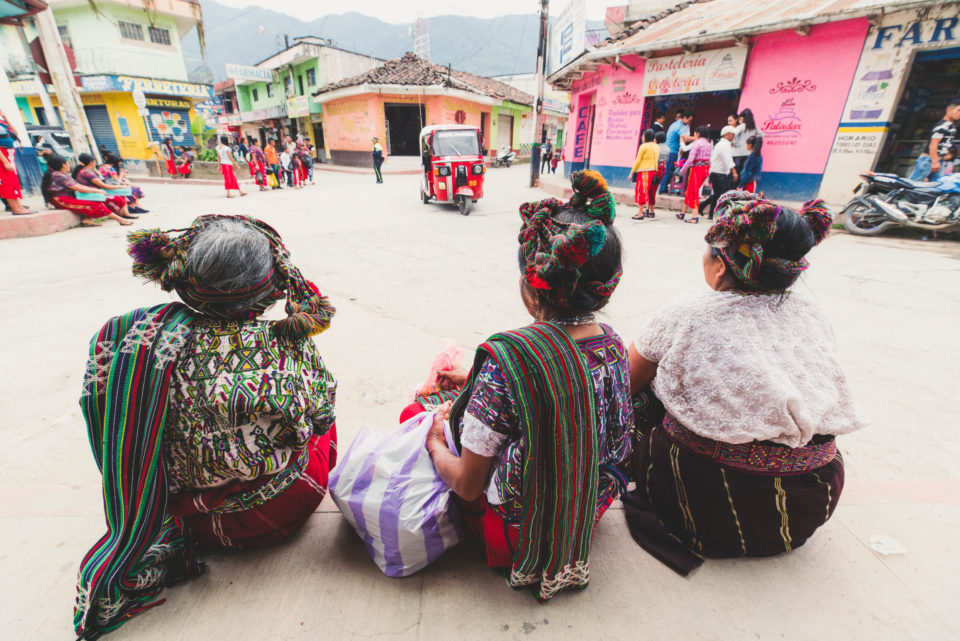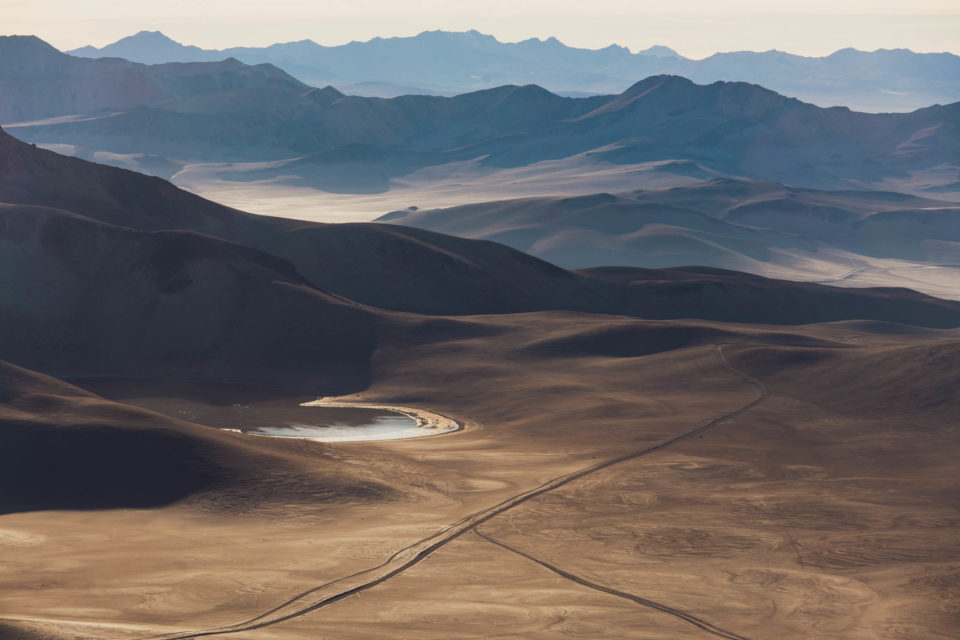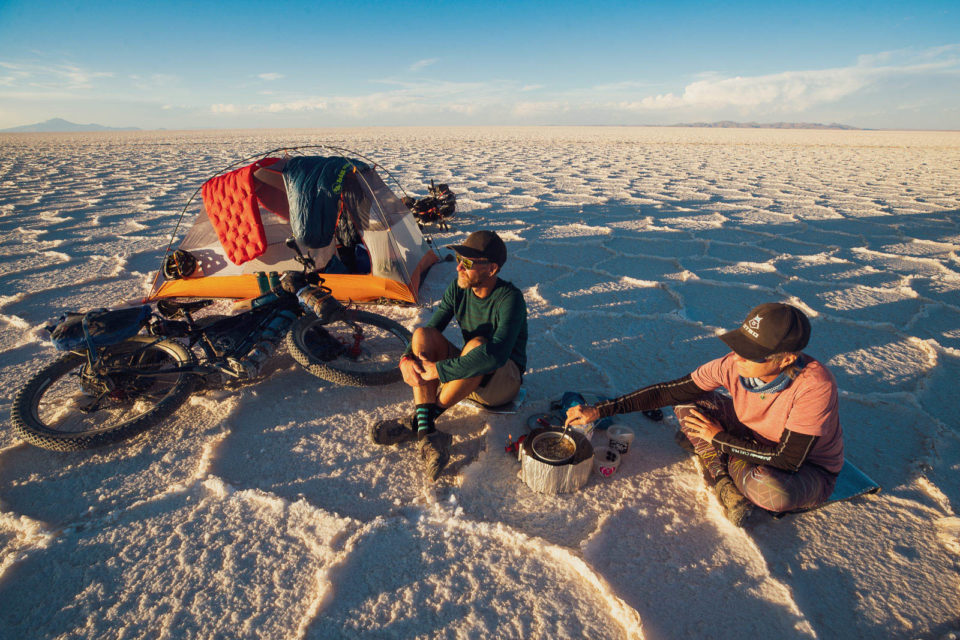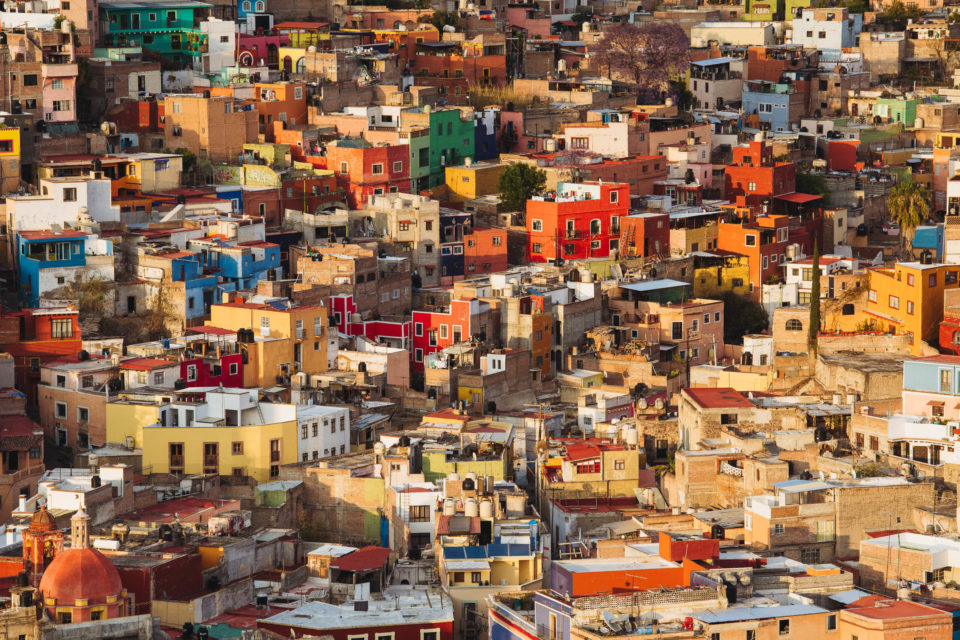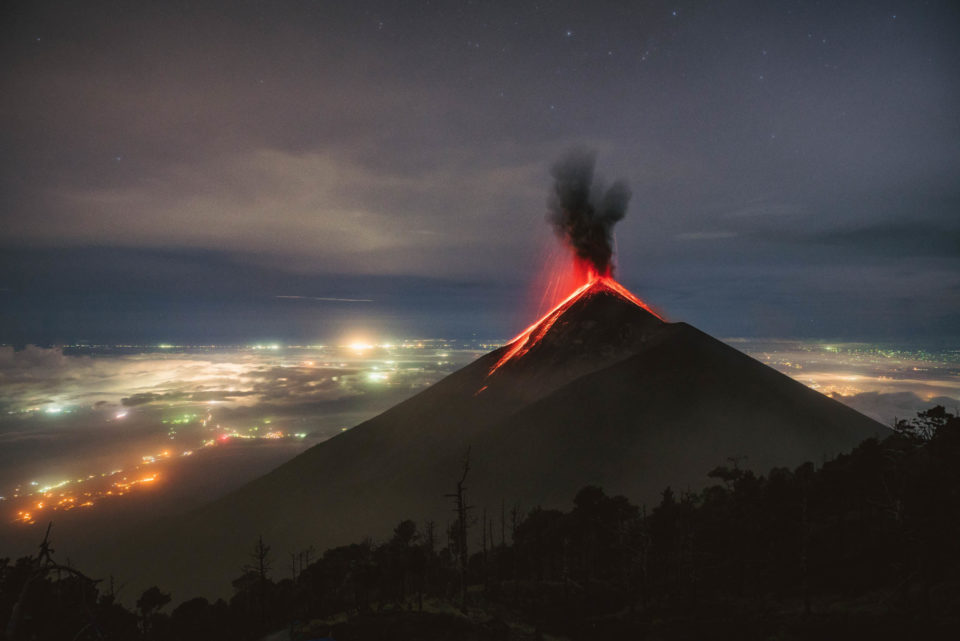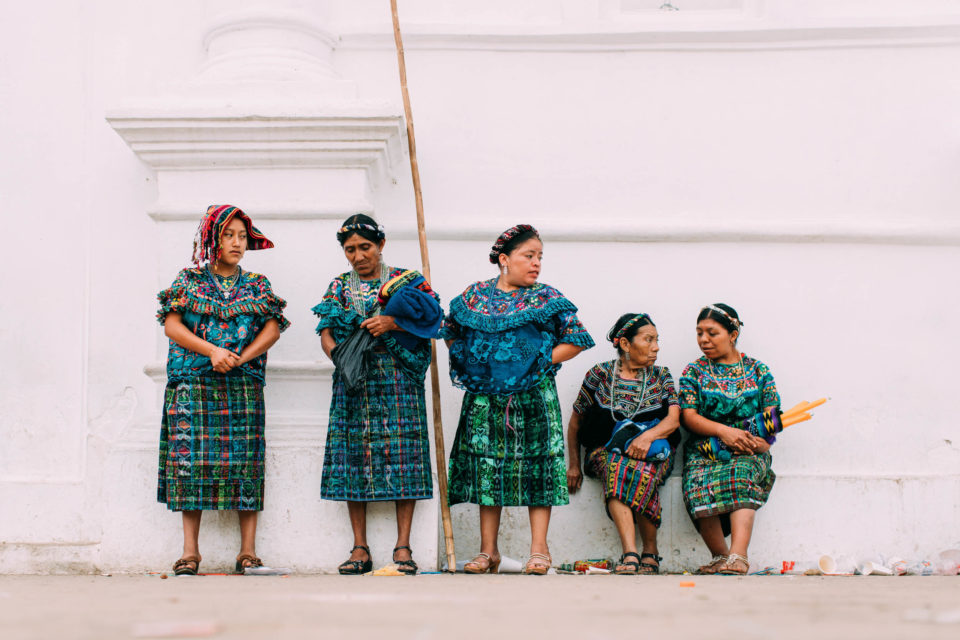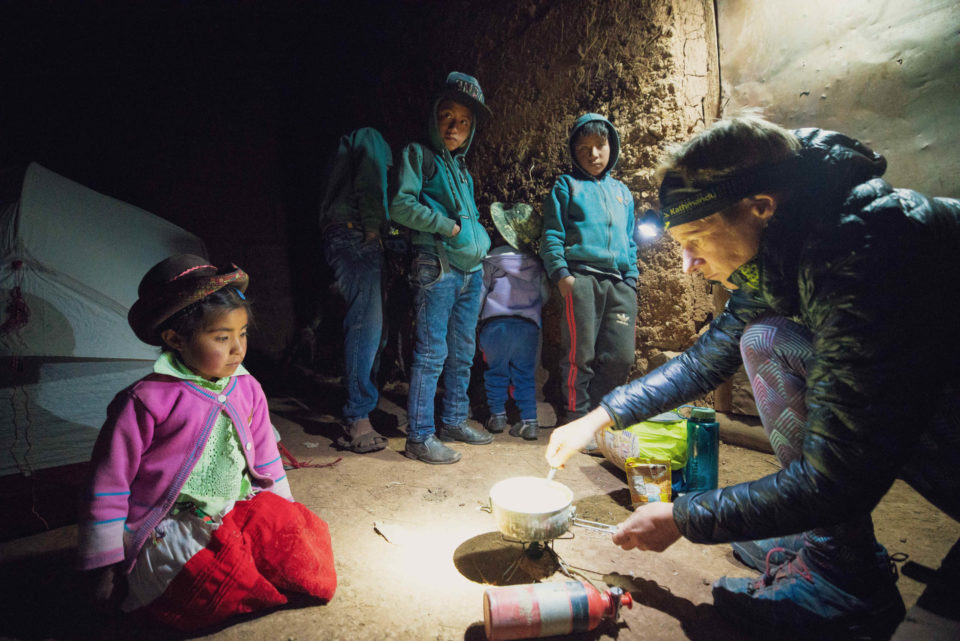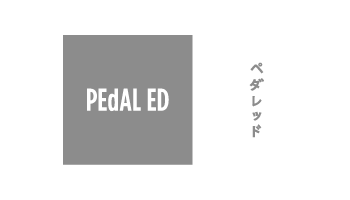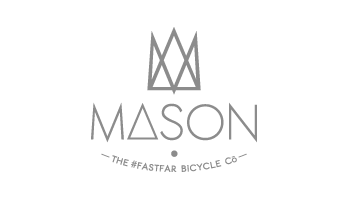The American Cordillera
Originally published in the sixth issue of The Bikepacking Journal, “The American Cordillera” chronicles Mark Watson and Hana Black’s incredible four-year journey along the spine of the Americas. Find a reflection on what they learned along the way and a fascinating gallery of photos here…
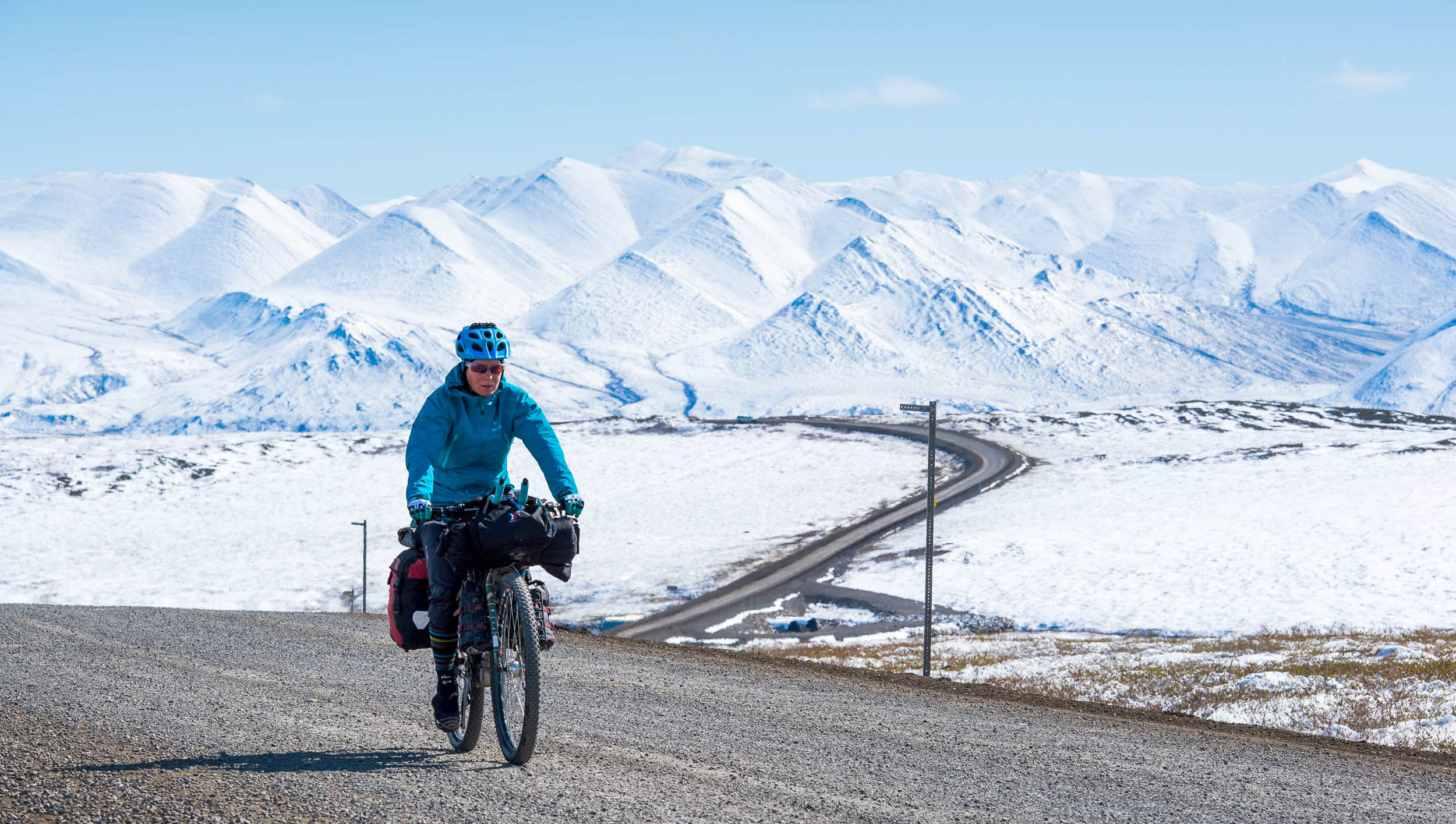
On June 6, 2016, my partner Hana Black and I embarked on a 45,500-kilometre cycling journey south through the American continents, starting in Deadhorse, Alaska. Our bags were tightly packed with a week’s worth of food and equipment to survive Arctic conditions. Our minds brimmed with anticipation for what lay ahead.
Northern Alaska is divided latitudinally by the Brooks Range. To its south lies land cloaked in spruce forest stretching as far as the eye can see. To the north is the exposed tundra of the North Slope, an almost permanently frozen, treeless landscape with an average annual temperature of -4°C. Deadhorse, the northern origin of both the 1,200-kilometre Trans-Alaska oil pipeline and the dirt ribbon of the Dalton Highway, is situated on the North Slope at the edge of the Beaufort Sea. At 71 degrees north, it’s well inside the Arctic Circle. The town has a permanent population of only 50 but can host up to 3,000 oil industry workers at its busiest.
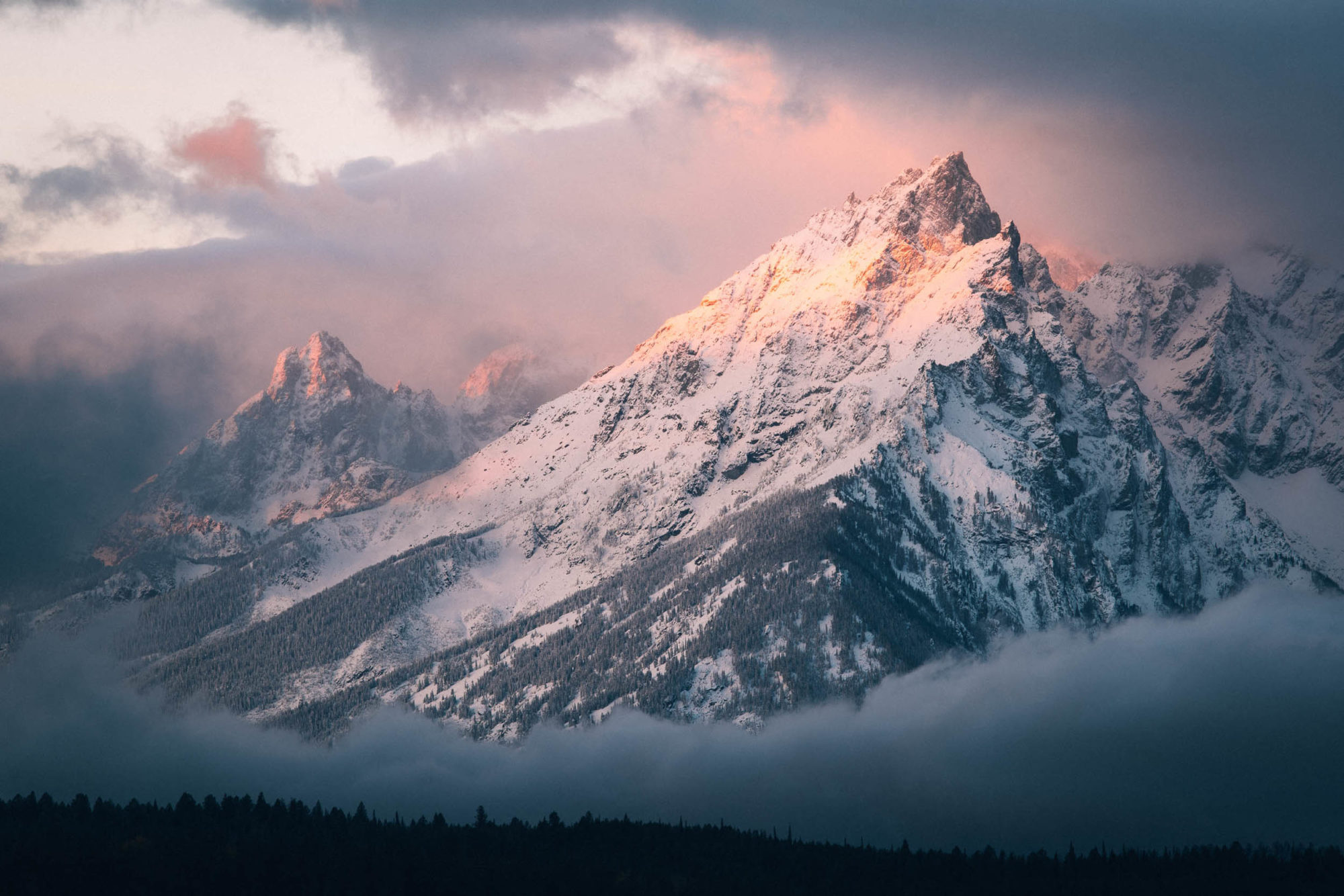
Standing at the start of the Dalton, we absorbed our surroundings. The frozen lakes, grey sky, and tan ground seemed to merge disorientingly into one. The horizon was tainted with the forms of oil derricks and other infrastructure. This icy, industrial settlement at the juncture of the sea ice and a barren landscape held a strange fascination for us. What a place to start!
The morning was clear, calm, and just below freezing as we made the first pedal strokes of what would become a nearly four-year bikepacking journey along the length of the Americas, a landmass that occupies close to 30 percent of the planet’s terrain. Our objective was to cycle the length of the American Cordillera, the collective name for the near-contiguous mountain ranges in the west of both continents. These ranges form the continental divide of the Americas, separating the watersheds of the Pacific and the Atlantic Oceans. As we headed south, we planned to cross the Brooks Range and then follow the Coast Mountains through Canada, the Rocky Mountains of Canada and the United States, the Sierra Madre of Mexico, the Central American cordilleras, and the Andes of South America. Where practical, we’d follow or zig-zag across the Continental Divide. At other times, we’d ride proximate to the ranges.
There’s an aesthetic to the concept of a trans-Americas journey that appealed to us: traverse from the top of the world to the bottom and incorporate climates as diverse as any on the planet. From the Arctic to the Equator, the Amazon to the Atacama Desert. We also liked the idea of tracing the path of human migration, following the thousands-of-years-long journey that peopled the Americas after the ancestors of Indigenous Americans first crossed the Bering land bridge in western Alaska.
Riding out of Deadhorse that first day, the thought of cycling across Alaska and Canada to the Lower 48 seemed daunting enough, let alone what awaited us in Central and South America, distant regions we had never visited and knew little about beyond the famous landmarks and tourism icons. We envisaged 18 months to two years for this undertaking, imagining that the sense of discovery and achievement would come in equal measures from what we encountered along the way and on our arrival in Ushuaia, Argentina, the southernmost city in the world and our terminus. But we discovered along the way that one of the well-worn cliches of travel is true: the journey is the destination. Two years on the road turned into four, and we became enraptured by a journey of exploration that became much more important to us than the finish line at 54 degrees south.
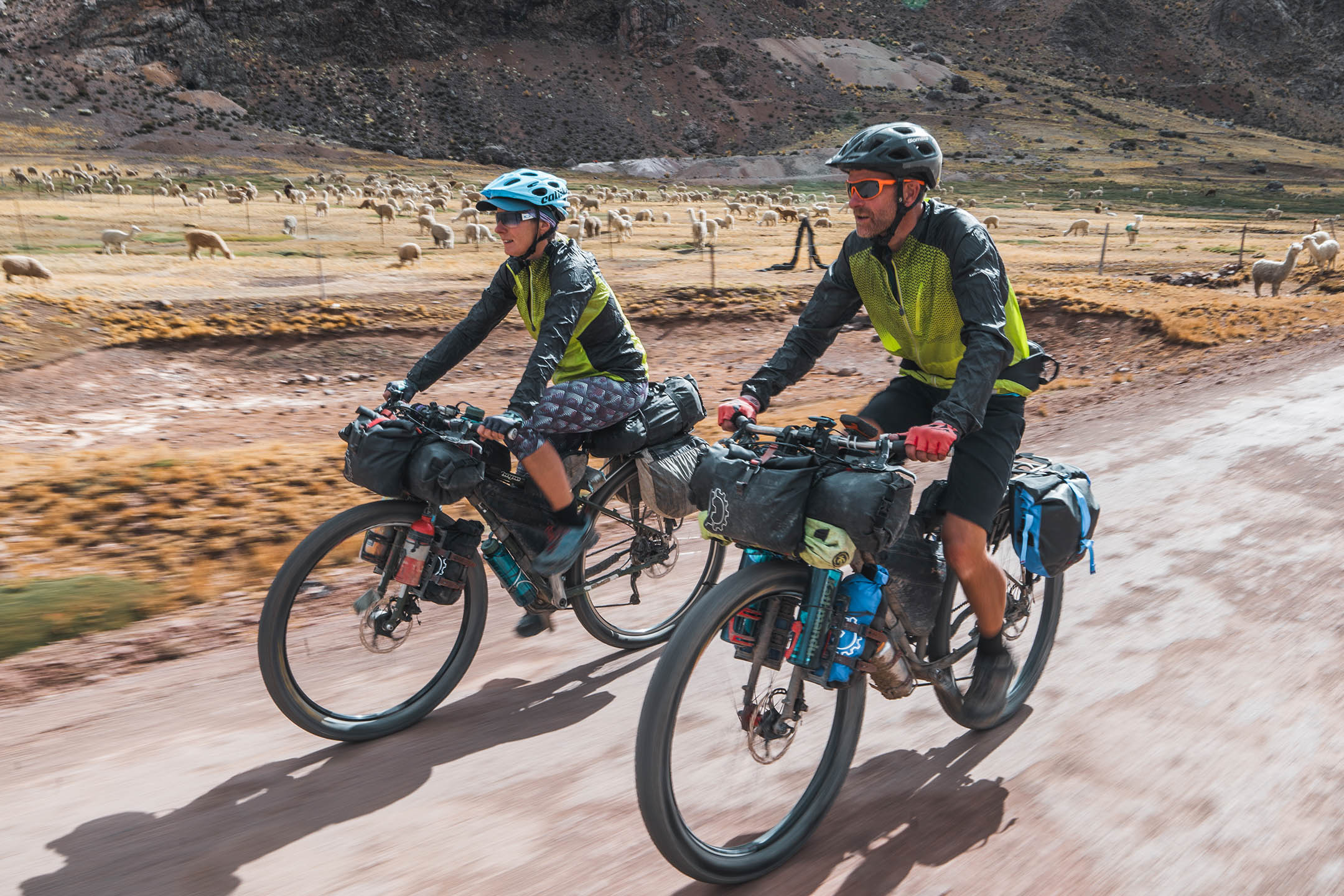
This wasn’t our first long cycle journey. In 2011, we completed a 13,000-kilometre ride from Chengdu, China, to the southern tip of Sumatra, Indonesia, traversing the Tibetan Plateau, Laos, Vietnam, Cambodia, Thailand, and Malaysia. For many people, long self-propelled journeys have an addictive quality. You become focused on more fundamental requirements than those of home and work: finding water, food, and shelter become the essentials. The endorphins and sense of achievement borne of covering the countryside under your own power leave you satisfied in a way that can only be described as primeval and innate. Much of life’s clutter falls away as you focus on the path ahead, living in the moment, interacting with whatever is in your proximity. We experienced this notion profoundly in Southeast Asia and never once wished for home on that nine-month trip. We reluctantly returned to New Zealand with dwindling funds but also the realisation that, cash permitting, we’d have kept going. On that first trip, we woke up day after day with undiminished enthusiasm, and it remained long after we returned home. It was a life-altering experience that gave us the confidence to tackle something much longer.
The seed for our Americas ride was sown by a chance encounter with some transcontinental road cyclists in Chihuahua during a Mexico road trip in 2010. They were the first we’d met who were undertaking a trans-Americas tour, and we finished our brief conversation with them feeling inspired to tackle a similar journey. After returning home from Southeast Asia in late 2011, we retained a singular focus on leaving again to ride “the length of the Americas,” as we dubbed it. In the intervening four years, we kept an eye on our spending and worked hard. Hana, trained in fashion design, spent most of those years working as a product technician for an outdoor clothing and equipment company, while I worked as a photographer and graphic designer.
About a year before we left New Zealand for the Americas, we set a specific departure date, and from that point on, the thought of leaving was always in the back of our minds. It dictated our life decisions and how we spent our money. Our commitment to going was total. We were nearly mortgage-free on our house in Lyttelton, and after much deliberation, we decided to sell this much-loved home and invest the proceeds in other property. It was a pragmatic decision driven purely by economics. After 10 years, Lyttelton would no longer provide a physical home. We were cutting ourselves free.
The shake-up of our property assets left us a chunk of cash that we’d live off on the road, along with a small amount of rent and income from my photography and writing sales. In the weeks prior to leaving, we began a massive clear out of everything we owned. We sold our cars. We intricately packed a shipping container full of goods we considered sentimental, recreational, or essential for remaking a home someday, somewhere, and left it on a friend’s rural property.
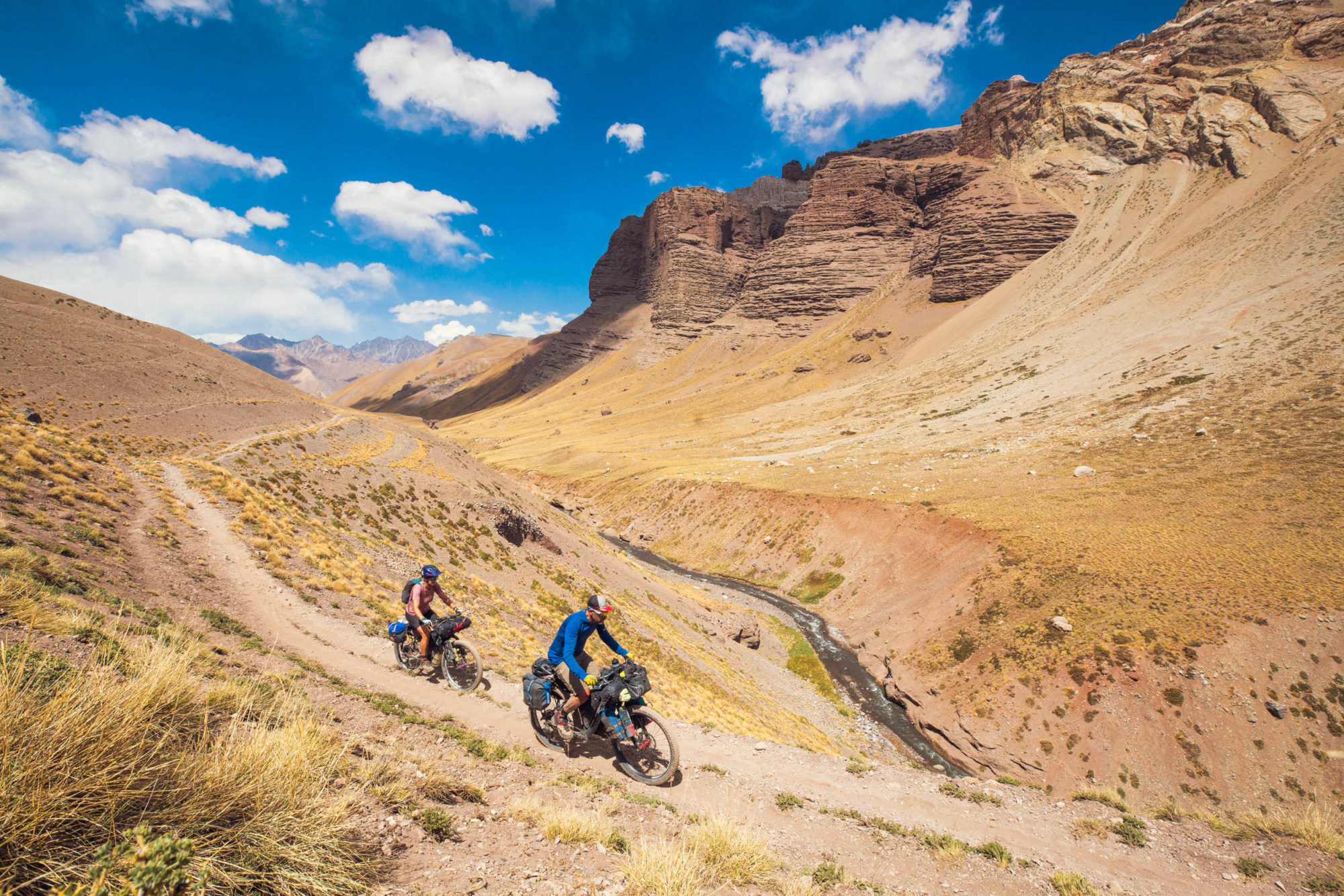
We bought new bikes and set about outfitting ourselves with specific equipment for the ride. Bear bells, bear spray, and bear-proof food bags were high-priority items. To enable remote communication and rescue if we required it, we bought a satellite tracker with which we planned to send out daily location “pings” so people could follow our progress. We also needed to consider logistics. The cold weather equipment required for the start of the ride would be superfluous through large sections of the journey, and we didn’t want to be burdened carrying gear we didn’t need. So, we planned to “bounce” a box of clothes and sleeping bags ahead—the longest leg being from Tijuana, Mexico, to Huaraz, Peru. A couple of generous sponsors came on board too, with full sets of bikepacking bags and a ready supply of chain lube and chamois cream.
After leaving Deadhorse, we mostly followed gravel roads and pavement as far as Banff, Canada. There, we joined the iconic Great Divide Mountain Bike Route, which, by means of bridle paths, gravel roads, and 4WD trails, carried us south over some of the highest passes in the Rocky Mountains to Hachita, New Mexico, just a few hours’ ride from Mexico. There, we turned west and traversed the borderlands of the American Southwest towards California. From San Diego, we picked up the just-published Baja Divide bikepacking route, which initiated an exciting new chapter of our journey. We’re mountain bikers at heart, so we felt right at home on the demanding rocky and sandy tracks. But the cultural novelty, change of language, and desert environment dealt us a new set of challenges.
As we progressed south through mainland Mexico, Central America, and South America, we followed a combination of the established bikepacking routes, such as the relatively well-travelled Trans Ecuador and Peru Divide, while researching and exploring our own linkages and alternates. Some countries, such as Mexico, Guatemala, and Honduras, felt like uncharted territory when it came to exploring off-pavement options. We felt lucky to have so little information and so much to discover for ourselves. We came to recognise that the greatest rewards came from riding through the regions we had the least intel about.
Our purpose was rarely to get simply from A to B, but to find the most interesting—and often most remote—way possible. To facilitate that, we would spend hours poring over maps and satellite imagery and planning routes on our laptop—a process we enjoyed. We were partway through Mexico when it began to dawn on us that the richness of the day-to-day experiences and having time to absorb our surroundings was what was most important to us. Our “goal” of reaching Ushuaia began to seem abstract. It provided some guidance in decision-making and timing, but in the end, we refined our modus operandi to make every day on the road as meaningful as possible.
This approach led to a series of experientially profound chapters as we encountered different countries, cultures, and climates. Mexico was themed by navigating through some of the country’s poorest and most remote states and villages, punctuated by the rich diversity of its colonial cities. Guatemala was a revelation for its highly visible indigenous culture, deep traditions, and beautiful landscapes. It was also an affordable place to pause and further our Spanish language study. Encountering villages that weren’t on the established mapping services became a constant throughout our journey, particularly in Guatemala, Honduras, and Peru. Almost invariably, the inhabitants were welcoming and just as curious to find out about us as we were about them. Sometimes small children fled when they caught sight of us, and more than once we were told we were the first gringos to visit.
From Panama City, we took a flight to Cuba, cycled the Ruta Mala, and then flew to Cartagena on the north coast of Colombia to begin the final long chapter south. Nearly two years in the high Andes taught us how to deal with altitude, climbs that lasted all day, and how to be comfortable in freezing conditions on a nightly basis for weeks at a time. In the more remote regions, it was not uncommon for us to be asked why we were there: were we mining for gold, bringing religion, or delivering medical supplies?
We pushed ourselves hard sometimes, testing our boundaries and learning how adaptable we were to different stressors. Our minds were like dilated pupils: wide open and receptive to every detail, which now, months and years later, are still vividly seared into our memories. The recollections have a clarity that’s hard to glean from the experiences of everyday life.
We blogged as we rode, breaking the ride down into one- to two-week chapters that communicated our experience and observations. We also documented some of our trail discoveries and published these on BIKEPACKING.com and our website. In this way, we established enough of a profile that more equipment sponsors came on board, including a bike brand and a couple of outdoor clothing and equipment suppliers.

The length and diversity of the ride also provided us the opportunity to try different bikes, equipment, and packing methods. We started the journey with 29ers but finished on 27.5 plus bikes, realising partway that the wider tyre platform suited our exploratory style of riding the best. We also made adjustments to our luggage, having begun with a hybrid setup of regular panniers alongside bikepacking bags. This arrangement morphed into a more adaptable packing style as we experimented with custom low-profile panniers better suited to technical riding. Sometimes, to save weight for extra challenging sections, we would send the laptop, racks, and panniers ahead and switch to saddlebags. We were constantly optimising our clothing and equipment selection—never carrying anything we didn’t need—in order to remain light and agile, which opened up a wider range of road and trail options. Our aim was not to just “survive” tough sections of riding but to enjoy them.
The zenith of our long-distance bikepacking experience was the time we spent on the puna of northern Argentina, on the extraordinary Ruta de los Seis Miles. This high-altitude desert region, covered in volcanic cones, lava fields, pumice formations, salt flats, and sand, was unlike anything we’d seen before. It’s often compared, quite reasonably, to Mars. The “road” is often nothing more than two 4WD tyre tracks cutting through an ash-covered landscape of red and yellow-hued mountainsides.
With no villages or resupply for nearly three weeks and only one small farm with permanent inhabitants, the route dictated that we carry food for 18 days and sometimes up to three days’ worth of water between sources. The remoteness of the area and the potential consequences of a mistake or accident put a heightened demand on our decision-making and self-reliance. Still, the experience synthesised and tested everything we’d learned and the conditioning we’d gained in three and a half years on the road.
The heights of the puna gradually led us down to the lowlands of Chilean Patagonia. It was there, in mid-March 2020, that we learned the novel coronavirus had unfurled its tentacles to some of the farthest reaches of the planet. With no notice, the Chile-Argentina border closed. The cessation of interprovincial travel in Chile followed and made further progress by bicycle impossible. Within 48 hours, we made the difficult decision to return to New Zealand.
Although it took a little while to get our heads around relinquishing the lifestyle we’d come to love on the road, it was not as hard to accept as you might think. Overall, we felt fortunate. The day we realised we were going home, we met a pair of northbound cyclists on the Carretera Austral. The couple reminded us of ourselves nearly four long years earlier. They’d cut the bonds of life at home and set themselves free on a multi-year ride north. They were blissfully unaware of the ramifications the pandemic would have on their plans, and we hated to break to them the news of border and national park closures. We were privileged to have lived lives that made such an experience possible and lucky to have had the time we did on the road without any major calamities. The two years we’d pencilled in for our ride had become four, and we’d filled our memories with a wealth of experiences.
Aside from the intrinsic pleasures of cycling and traveling, our 45,500-kilometre ride taught us many things. One of them was how to deal with the unpredictability of daily life in developing countries. Perhaps that’s one reason why returning home due to COVID-19 didn’t seem so bad after being so close to the theoretical end of the journey. At the end of the day, it was just another challenge, like many we faced on the road, along with sickness, storms, mechanicals, and navigating cultures unknown to us.
We also grew in other ways on this journey. We learned another language. We became more patient and more adept at facing adversity. We have a greater estimation of what we’re physically capable of. We saw geographical and cultural wonders we never imagined and tried all manner of foods in places with names we still can’t pronounce.
We’re more empathetic now, too. Travel—in sustainable overland modes such as walking or cycling—puts you in close contact with local people and encourages your interaction for the purposes of resupply, shelter, and human connection. We discovered that the people who own the least tend to be the ones who give the most. To be on the receiving end of that was humbling. Interaction with diverse people and cultures throughout the Americas has given us invaluable insights into how people live, which has made us more understanding. We care more about our planet and the people who live on it, which is perhaps the most important lesson of all.
Although we sated ourselves, our yearning to return and complete our journey is powerful. When heading back to South America becomes a safe and reasonable thing to do, we intend to. Not just because we want to reach Ushuaia, but because there are places to see, people to meet, things to learn, and because we know the road is a place where we will continue to challenge ourselves, adapt, and grow.









